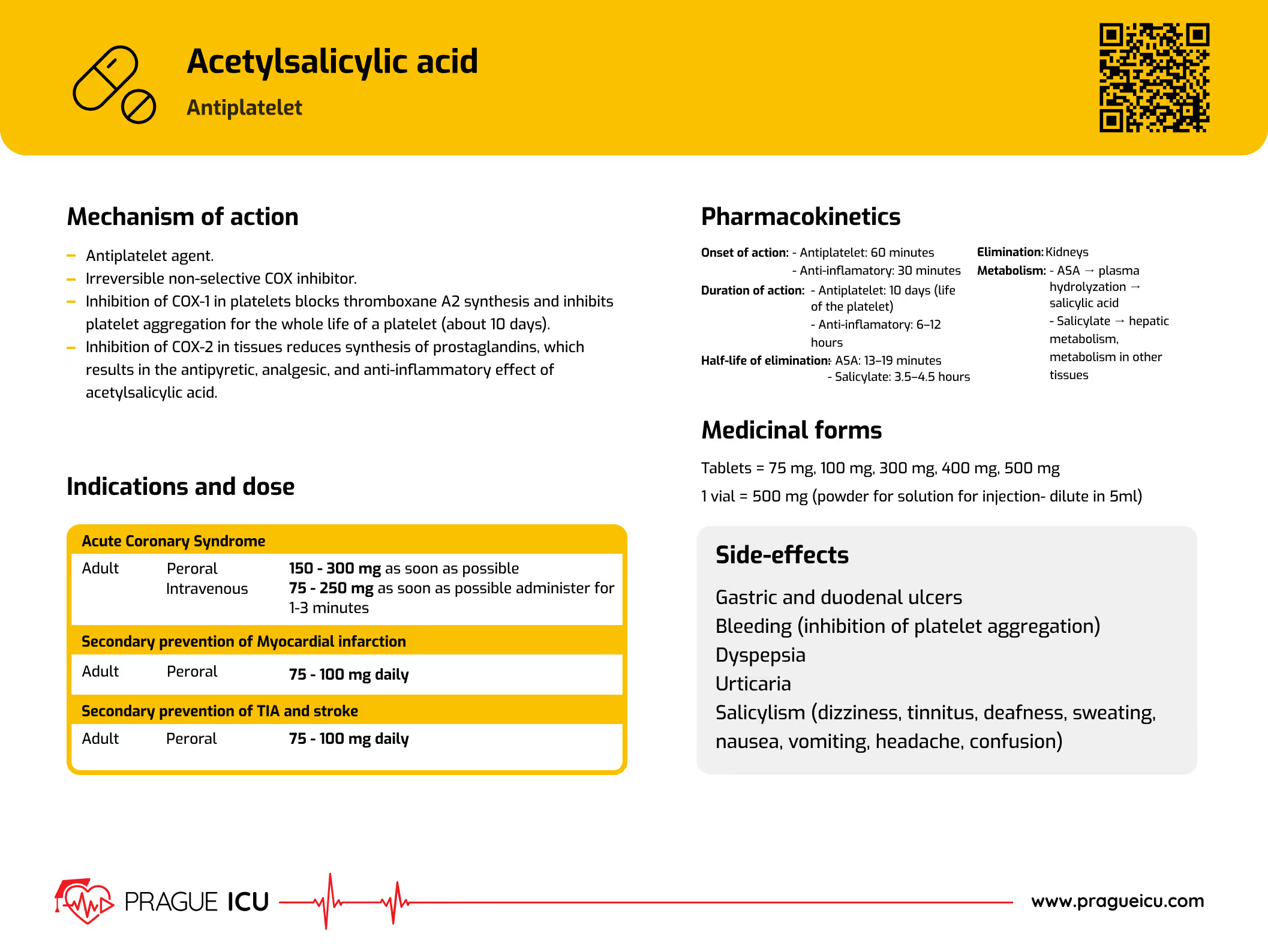
Mechanism of action
Antiplatelet agent.
Irreversible non-selective COX inhibitor.
Inhibition of COX-1 in platelets blocks thromboxane A2 synthesis and inhibits platelet aggregation for the whole life of a platelet (about 10 days).
Inhibition of COX-2 in tissues reduces synthesis of prostaglandins, which results in the antipyretic, analgesic, and anti-inflammatory effect of acetylsalicylic acid.
Indications and dose

Pharmacokinetics
Onset of action:
- Antiplatelet: 60 minutes
- Anti-inflamatory: 30 minutes
Duration of action:
- Antiplatelet: 10 days (life of the platelet)
- Anti-inflamatory: 6–12 hours
Half-life of elimination:
- ASA: 13–19 minutes
- Salicylate: 3.5–4.5 hours
Metabolism:
- ASA → plasma hydrolyzation → salicylic acid
- Salicylate → hepatic metabolism, metabolism in other tissues
Elimination: Kidneys
Medicinal forms
Tablets = 75 mg, 100 mg, 300 mg, 400 mg, 500 mg
1 vial = 500 mg (powder for solution for injection - dilute in 5 ml F1/1)
Side-effects
Gastric and duodenal ulcers
Bleeding (inhibition of platelet aggregation)
Dyspepsia
Urticaria
Salicylism (dizziness, tinnitus, deafness, sweating, nausea, vomiting, headache, confusion)
References



